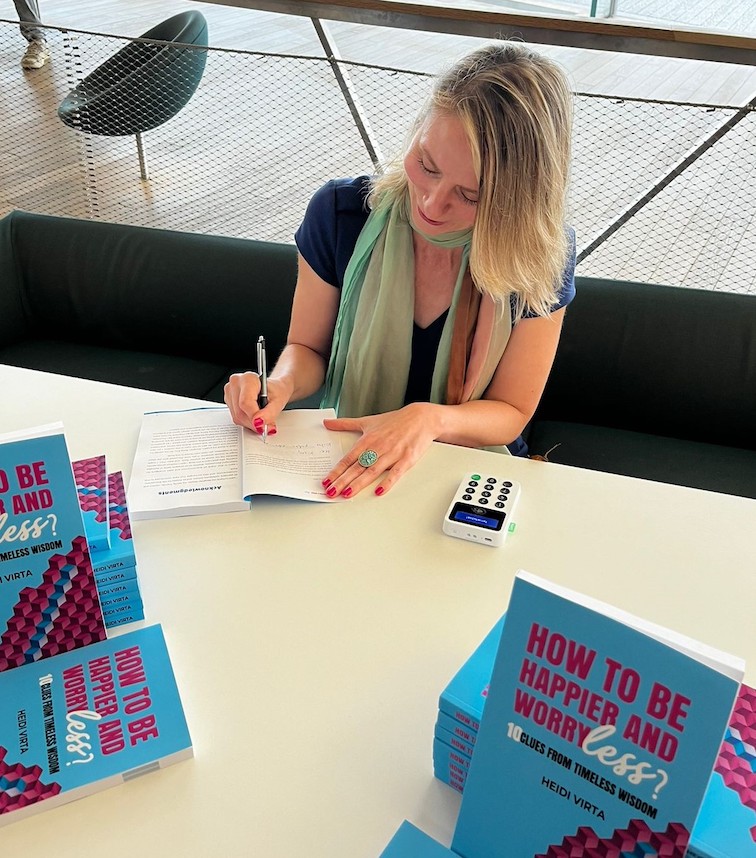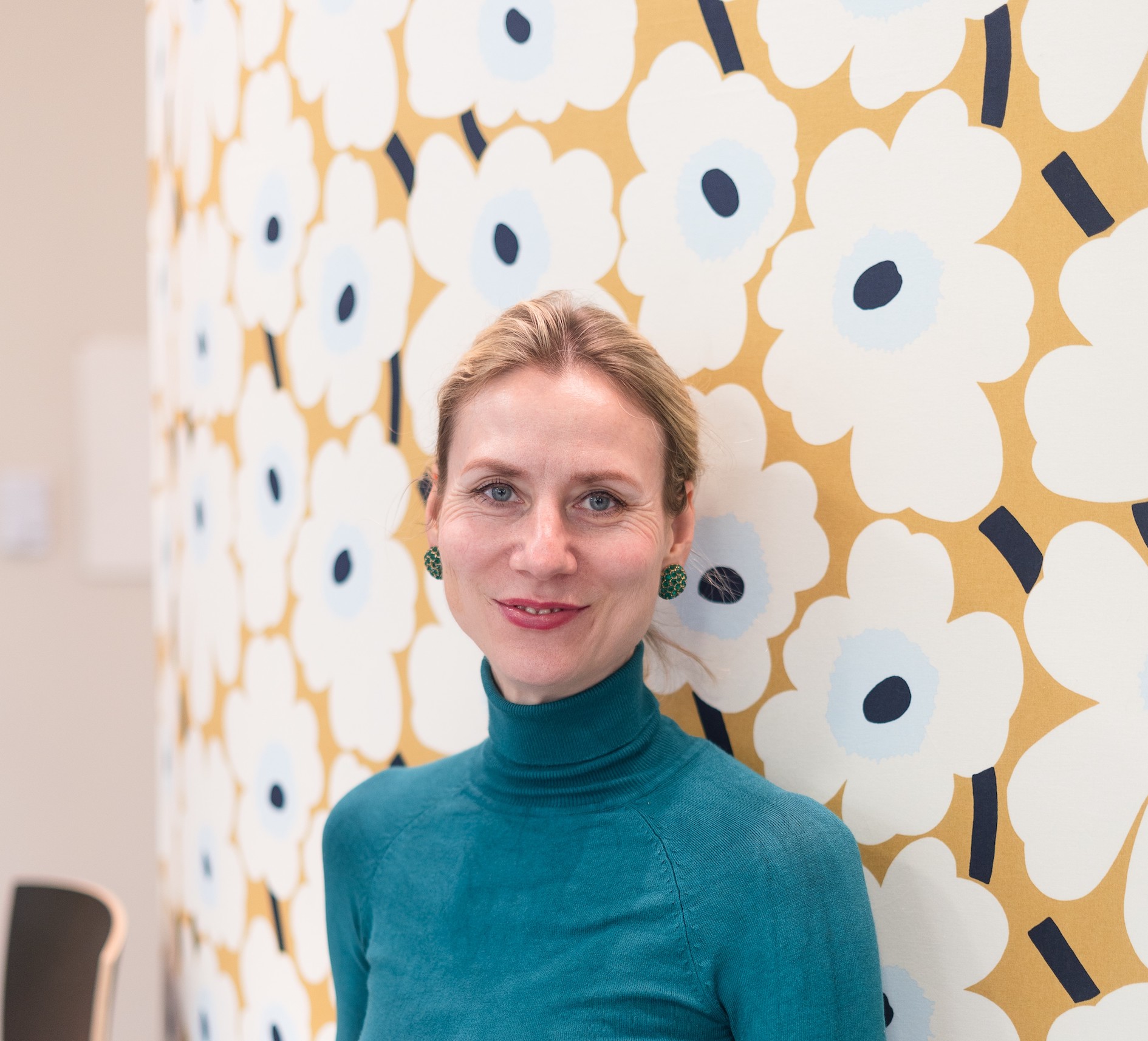Welum had the opportunity to interview the author of this book, Heidi Virta, who has over 20 years of experience enhancing Finnish business relationships in Latin America in industries such as energy, mining, telecommunications, healthcare, forestry, and education. Heidi has been the Director for Latin America at Business Finland since May 2018, in her role, Heidi Virta leads regional Business Finland operations from four offices.
You are the Director for Latin America at Business Finland, in your role, you lead regional Business Finland operations from four offices, Brazil, Chile, Peru, and Mexico, creating the right environment to trigger win-win partnerships in business and innovation between Finland and Latin America, did it drive you to write a book about happiness the fact that you are Finnish and your country is considered the happiest country in the world according to the World Happiness Report?
I was first inspired by the Ancient Greek philosophers. I’ve always been curious about why some people seem happier than others, and during the pandemic, I stumbled upon the works of Plato and Socrates. Their ideas offered simple yet profound guidelines for happiness, which resonated with me deeply. I began writing down what I had learned, and over time, I created my own "rules" or clues for happiness.
Later, with encouragement from friends, I decided to turn these insights into a book that could be shared with others. While my Finnish heritage plays a role in my perspective, I’ve also incorporated elements from Latin American cultures, where I’ve lived for over 20 years. Finnish culture shares certain similarities with Greek philosophy, and these influences are woven into the book alongside the vibrant Latin American experiences that have shaped my life.
Certainly, many aspects contribute to Finland being named the happiest country in the world, such as equality, transparency, small differences between social classes, free education and healthcare, and a deep connection with nature, just to name a few. These cultural elements have also influenced my views on happiness and are reflected throughout the book.
What are the main obstacles people face to live a happy life?
There are many different reasons why people might struggle to live a happy life, and while everyone’s challenges are unique, a few key obstacles come to mind:
- Seeking Happiness in the Wrong Places: Often, we’re unaware of what truly brings long-term satisfaction, leading us to chase after things like power, fame, money, or material possessions. While there’s nothing inherently wrong with these things, they alone don’t create lasting happiness. They are transient and can bring joy when we have them but also cause sorrow when we lose them. I’ve personally made the mistake of thinking that these external circumstances would make me happy.
- False Perceptions of Life: Sometimes, we hold onto false ideas about life. When things don’t go as expected, we might feel sorry for ourselves, become ungrateful, or believe life is unfair. Viewing our lives through a negative lens can prevent us from appreciating the good and lead to unhappiness.
- Facing Life’s Difficult Challenges: Life inevitably brings difficult situations—losing a job, a spouse, friends, pets, or even a home. These are painful experiences that naturally bring sorrow.
- Basic Needs and Precarious Situations: For some, the lack of basic needs like housing or food creates constant stress, which makes it difficult to focus on happiness.
- Depression: Many people suffer from depression, which can make finding happiness a significant challenge. Depression isn’t just sadness; it’s a mental health condition that requires understanding and care.
Tell us more about your book: How to be Happier and Worry Less? 10 Clues from Timeless Wisdom, what is it about, and what can people expect?
How to Be Happier and Worry Less: 10 Clues from Timeless Wisdom is about helping us discover how happiness is within reach for everyone, no matter what setbacks life throws our way. The book identifies aspects that contribute to happiness, regardless of life’s circumstances, drawing on the wisdom of Ancient Greek and Roman philosophers.
The main idea is simple yet profound: accept with grace what we cannot change, improve what we can, and learn to distinguish between the two. The 10 clues in the book serve as guidelines for long-term happiness. These include knowing and accepting oneself, managing negative emotions, practicing virtuous behavior, building meaningful relationships, managing time, taking care of health, practicing our knowledge and skills, gathering sufficient wealth, and sharing the rest.
Each chapter combines timeless wisdom with practical advice for today’s world, offering readers unique quotes from the past that have been adapted to fit modern times. The book encourages everyone to build their guidelines for happiness—handrails to hold onto during tough times. It’s easy to be happy when things are going well, but when difficulties arise, having these personalized guidelines becomes invaluable.
Each chapter also includes reflective questions to help readers gain a deeper understanding of themselves and what truly brings them joy. Additionally, the book offers a free happiness toolbox with over 50 self-reflection questions, available for download at www.heidivirta.com This toolbox is designed to help readers create their recipe for long-term happiness.
Many books discuss happiness, what value does yours bring in this field?
While many books discuss happiness, How to Be Happier and Worry Less? 10 Clues from Timeless Wisdom offers a unique perspective by blending ancient philosophical wisdom with practical modern advice. Here’s what sets it apart:
- Timeless Wisdom: The book draws on the insights of Ancient Greek and Roman philosophers, whose teachings on happiness and well-being have stood the test of time. By revisiting these timeless principles, the book provides a deep and well-established foundation for understanding happiness.
- Practical Application: Unlike some philosophical texts that remain abstract, this book translates ancient wisdom into actionable steps for contemporary life. It bridges the gap between theory and practice, offering readers practical guidelines that they can apply to their daily lives.
- Cultural Integration: The book integrates aspects of Finnish and Latin American cultures, reflecting my personal experiences and observations. This cross-cultural approach provides a broader perspective on happiness, incorporating diverse viewpoints and practices.
- Personalized Guidelines: One of the unique features is the emphasis on creating personalized guidelines for happiness. The book encourages readers to build their own "handrails" for difficult times, making the advice more relevant and actionable for their circumstances.
- Reflective Tools: Each chapter includes reflective questions designed to help readers gain a deeper understanding of themselves and their sources of joy. Additionally, the free happiness toolbox with over 50 self-reflection questions offers a practical resource for ongoing personal growth.
- Modern Relevance: The book adapts ancient wisdom to address modern challenges and stresses, making it relevant for today’s readers who face unique pressures and circumstances.
By combining these elements, the book not only explores happiness from a philosophical standpoint but also provides tangible tools and strategies for readers to enhance their well-being in practical, everyday ways.
Anything else you want to add?
Thank you for the excellent questions and for taking the time to interview me. The reason I wrote this book is simple: to help myself—and others—be happier and worry less. I believe that if more people found genuine happiness within themselves, we would see less sorrow and conflict in the world. As Epicurus wisely said, "The serene man causes no disturbance to himself or another." I hope this book serves as a valuable resource for anyone seeking to enhance their well-being and navigate life’s challenges with greater ease.



